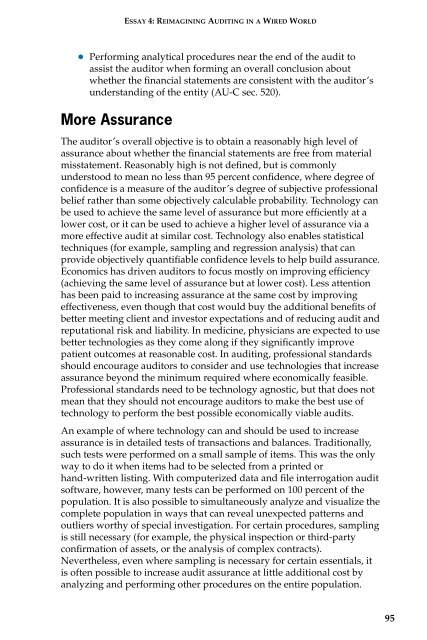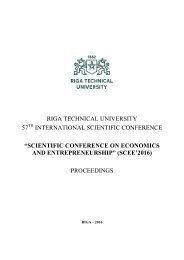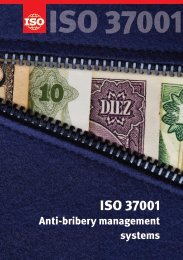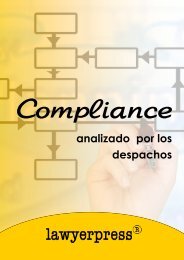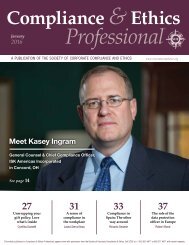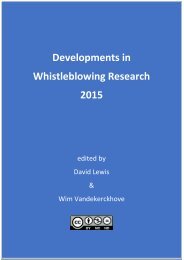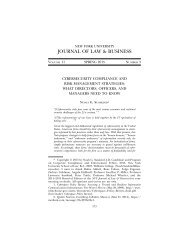AUDIT ANALYTICS AUDIT
x8YaD9
x8YaD9
- No tags were found...
Create successful ePaper yourself
Turn your PDF publications into a flip-book with our unique Google optimized e-Paper software.
ESSAY 4: REIMAGINING <strong>AUDIT</strong>ING IN A WIRED WORLD<br />
Performing analytical procedures near the end of the audit to<br />
assist the auditor when forming an overall conclusion about<br />
whether the financial statements are consistent with the auditor’s<br />
understanding of the entity (AU-C sec. 520).<br />
More Assurance<br />
The auditor’s overall objective is to obtain a reasonably high level of<br />
assurance about whether the financial statements are free from material<br />
misstatement. Reasonably high is not defined, but is commonly<br />
understood to mean no less than 95 percent confidence, where degree of<br />
confidence is a measure of the auditor’s degree of subjective professional<br />
belief rather than some objectively calculable probability. Technology can<br />
be used to achieve the same level of assurance but more efficiently at a<br />
lower cost, or it can be used to achieve a higher level of assurance via a<br />
more effective audit at similar cost. Technology also enables statistical<br />
techniques (for example, sampling and regression analysis) that can<br />
provide objectively quantifiable confidence levels to help build assurance.<br />
Economics has driven auditors to focus mostly on improving efficiency<br />
(achieving the same level of assurance but at lower cost). Less attention<br />
has been paid to increasing assurance at the same cost by improving<br />
effectiveness, even though that cost would buy the additional benefits of<br />
better meeting client and investor expectations and of reducing audit and<br />
reputational risk and liability. In medicine, physicians are expected to use<br />
better technologies as they come along if they significantly improve<br />
patient outcomes at reasonable cost. In auditing, professional standards<br />
should encourage auditors to consider and use technologies that increase<br />
assurance beyond the minimum required where economically feasible.<br />
Professional standards need to be technology agnostic, but that does not<br />
mean that they should not encourage auditors to make the best use of<br />
technology to perform the best possible economically viable audits.<br />
An example of where technology can and should be used to increase<br />
assurance is in detailed tests of transactions and balances. Traditionally,<br />
such tests were performed on a small sample of items. This was the only<br />
way to do it when items had to be selected from a printed or<br />
hand-written listing. With computerized data and file interrogation audit<br />
software, however, many tests can be performed on 100 percent of the<br />
population. It is also possible to simultaneously analyze and visualize the<br />
complete population in ways that can reveal unexpected patterns and<br />
outliers worthy of special investigation. For certain procedures, sampling<br />
is still necessary (for example, the physical inspection or third-party<br />
confirmation of assets, or the analysis of complex contracts).<br />
Nevertheless, even where sampling is necessary for certain essentials, it<br />
is often possible to increase audit assurance at little additional cost by<br />
analyzing and performing other procedures on the entire population.<br />
95


